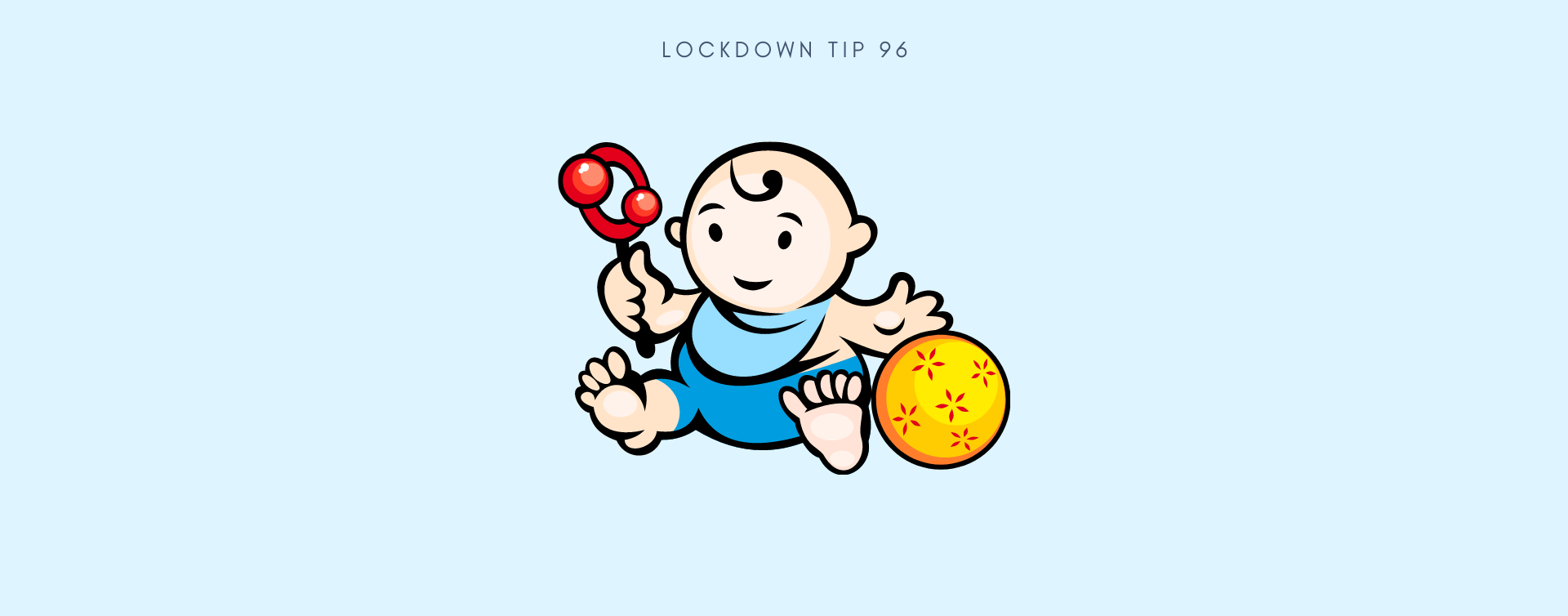Lockdown Day 96 – Treasure Baskets
Education of the Senses
Today’s post focuses on ‘Heuristic Play’, a type of play that children innately engage in when they are between 10 and 20 months old. The word ‘heuristic’ comes from the Greek word ‘eurisko’ which means ‘I find’ or ‘I discover’.
In their quest to adapt to the world into which they are born, babies and young children have an inbuilt human tendency for curiosity and exploration. We can take advantage of this disposition and provide children in this stage with appropriate materials that will both stimulate and satisfy this natural curiosity.
As the child is moving into the second year of life, s/he has developed reasonably good control over her/his body. Once s/he is able to sit and has developed adequate fine motor skills to hold objects, s/he is ready to explore what Eleanor Goldschmiedt termed the ‘Treasure Basket’.
* TREASURE BASKETS *
A Treasure Basket is exactly what it sounds like – a basket of treasures! Treasures that are so appealing that the child is drawn to first look at, then touch, taste, smell and hear each object. This is a wonderful way of bringing multi-sensory learning to your child.
A Treasure Basket is a suitable basket (ideally a low (approx. 12 sm), flat-bottomed round wicker basket without handles) that is filled with different collections of objects.
Try to fill your Treasure Baskets with many objects. The child at this age is drawn to variety. A sparse Treasure Basket will not hold nearly as much appeal as one that is packed with many treasures. Bear in mind that the objects you collect must be large enough not to be swallowed and must be free from sharp edges or anything else that may be harmful when the child puts it in her/his mouth.
Think about how the objects feel and also consider the way sensory materials look and smell, and the noises they make when used together (what happens when we bang the wooden spoon on a metal bowl?)
Here are some ideas that you might like to consider adding to your Treasure Basket:
- NATURAL OBJECTS – Various types of shells, pinecone, loofah or sea sponge, large pebbles or various shapes and textures, a piece of sheepskin, a coconut shell, some rope, woollen pompom, a whole orange or lemon.
- WOODEN OBJECTS – Curtain ring, wooden spoons, napkin rings, egg cup, dowel, wooden shapes.
- METAL OBJECTS – Colander, sieve, whisk, a bunch of keys, jar lids, tea strainer, large bell on a string, teaspoon and tablespoon.
- RUBBER OBJECTS – Ball, bath plug on a chain, large eraser, soap holder, door stop.
- FABRIC OBJECTS – Different pieces of fabric types (satin, silk, muslin, sequins etc), bean bag, bag of herbs, small soft toy.
- OBJECTS WITH BRISTLES – Paint brush, make-up brush, toothbrush, nailbrush, bottle brush.
- VARIOUS OTHER MATERIALS – Hair roller, wine or champagne corks, pot scourer
***
Make the Treasure Basket available to your child on a daily basis, but let this be a fun activity, not a chore. The child may engage with the Treasure Basket more on some days than on others.
Give the child freedom and time to explore on her/his own. This is the time of discovery and exploration. There are also multiple other benefits to this type of play:
- Exploration with all their senses: they can feel, taste, hear, smell and see a variety of textures, experiment and make choices.
- The provision of early experiences of sorting and classifying items.
- The development of fine motor skills.
- The beginning development of concentration.
- The promotion of open-ended and independent play
This learning can later be extended and added to by the adult providing some language to the child’s play. Please however be mindful that you do not ‘kidnap’ the child’s play to force a ‘lesson’. At appropriate times, you may verbalise what the child is exploring or doing. The use of rich vocabulary here will serve the child well – as was previously explained in our other posts!
****
Find all of our lockdown tips here – https://montessorisa.co.za/blog/



